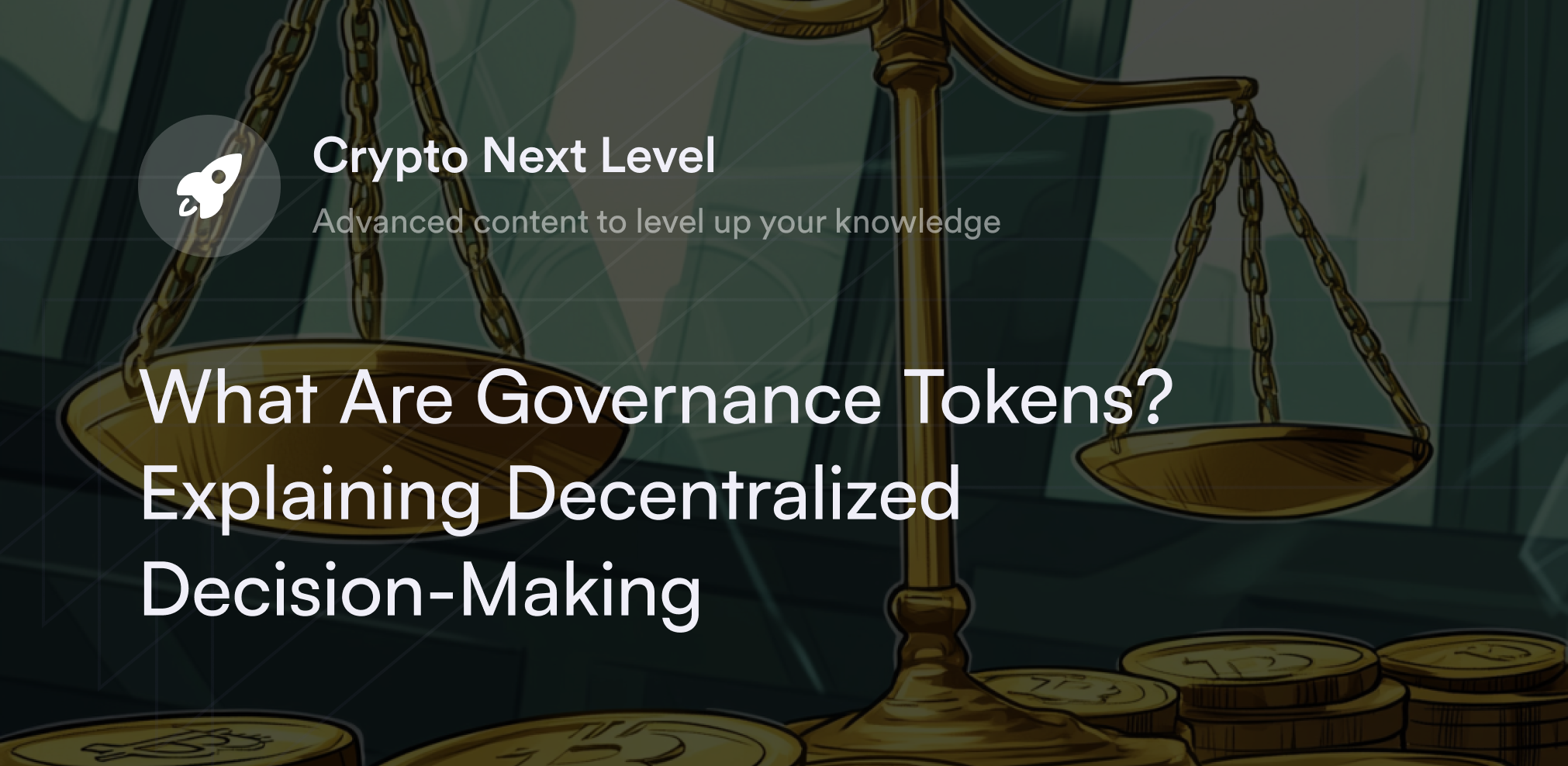


Every revolutionary technology needs foundational documents, including cryptocurrencies. Since the release of Bitcoin (BTC) in 2008, one writing template in this hi-tech field towers above the rest: the white paper. Many programmers use the white paper's outline as inspiration when organizing their thoughts, explaining their goals, and sharing technical concepts with the world.
Although crypto white papers may only seem significant for tech enthusiasts or crypto historians, interpreting these papers is a critical aspect of fundamental market analysis. Crypto traders often set aside hours to carefully comb through white papers before deciding how to position their portfolios.
In this guide, we’ll explore the standard structure and features in a "good" crypto white paper to help traders identify not only promising projects but also potential scams to avoid costly trading errors.
What is a crypto white paper?
Written by a blockchain development team, a crypto white paper serves as a cryptocurrency project’s introduction and overview. While crypto white papers include details on the technical aspects of a crypto asset, they aren't strictly academic documents intended for a professional audience. Instead, crypto white papers have a strong marketing angle, designed to educate, excite, and encourage market participants to generate buzz on social media, buy the associated crypto token, or get involved with the project's online community.
White papers communicate the purpose and unique selling points behind a new crypto asset or decentralized application (dApp) and address how the development team plans to achieve its goals. They also usually share transparent information on team leaders to provide accountability for a project's management.
High-quality crypto white papers allow readers to understand the problems the project intends to solve, how the team plans to reach its goals, and the ways to get involved with the new protocol.
What does a crypto white paper include?
Contemporary crypto white papers often draw inspiration from documents for influential projects like the Bitcoin white paper or the Ethereum (ETH) white paper, but there aren't hard-and-set rules writers need to follow. However, here are a few things to add:
Project outline: A detailed project description, including its background, purpose, and the problem it aims to solve.
Solution: Explanation of the proposed solution, including the technology, methodology, and unique features.
Team overview: Information about team members, their qualifications, and their roles in the project.
Market analysis: A complete analysis of the current market, potential competitors, and the project's place within the market.
Tokenomics: For blockchain projects, details on the release, distribution, and utility of tokens or cryptocurrencies.
Marketplace considerations: Information on where and how the token or product will be available, including potential exchanges and trading platforms.
Technical details: In-depth technical information about the project, including architecture, security features, and technological innovations.
Project roadmap: A timeline of key milestones, development phases, and future goals.
Risk analysis: Evaluation of potential risks and challenges, along with strategies for mitigation.
Legal considerations: Any legal aspects relevant to the project, including compliance with regulations.
Why is a crypto white paper important?
White papers are the cryptocurrency industry's equivalent of a detailed press release. They aren't overly promotional, but their primary purpose is to communicate value propositions with relevant stakeholders and market participants, hopefully stimulating buzz in the crypto community and attracting more funding activity.
These papers are the primary way developers establish trust and transparency with crypto traders while defining their market niche and competitive advantages. Successful crypto white papers drive crypto purchasers to the project by clearly and convincingly articulating a purpose. From a trader's perspective, white papers are an authoritative reference source for info, helping them make clear, research-backed decisions before buying digital assets or participating in new dApps.
Warning flags in crypto white papers
Well-constructed white papers instill confidence in the crypto community, but there are instances where these documents make readers doubt a new project’s prospects. As crypto traders review multiple white papers, they watch out for warning signs of a scam token.
Vagueness: Ambiguity has no place in a crypto white paper. If traders don't have a clear vision of a cryptocurrency's function and the steps leaders plan to take to achieve their goals, there's a chance writers are putting up a smokescreen to hide a lack of substance. Look for concrete details about how a project works, its unique use cases, and the problems it aims to solve.
Misspellings, grammatical errors, or typos: If crypto developers don’t take the time to proofread their white papers, readers may question the asset’s smart contract code. A white paper filled with glaring spelling or grammatical issues suggests a lack of quality control and poor attention to detail, raising uncertainty about the team’s thoroughness and their commitment to delivering a quality product.
Unrealistic expectations: High ambitions are noble, but they must be grounded in reality. While it's not a "bad" sign for white papers to make lofty claims, evidence (e.g., team experience, resources, and a detailed roadmap) must support these objectives. It’s crucial to critically assess whether a white paper's projected outcomes align with the team's expertise and if they highlight specific actions and measurable benchmarks to make these words into reality.
Lack of team transparency: Using non-fungible tokens (NFTs) as profile pictures is fun, but flexing Bored Apes on a white paper's team page isn't necessarily the wisest move. While crypto projects value online privacy, a transparent list of team leaders helps build trust with the crypto community. If a white paper lacks info on the team's experience, qualifications, and professional profiles, it raises questions about their credibility.
Where to find crypto white papers
Because white papers are so significant for developers, traders, and stakeholders, finding them on a project's official website is generally easy. Whether traders are interested in a blockchain white paper or technical specifications for an upcoming dApp, this info is typically in a tab labeled "Documents" or "White Paper" on the site's homepage. Crypto developers often share links to their white papers on official social media feeds, crypto-specific forums like BitcoinTalk, and the code repository platform GitHub.
Also, cryptocurrency price aggregator websites like CoinMarketCap and CoinGecko sometimes have hyperlinks to official white papers. To find these links, visit the cryptocurrency’s official page; usually, the white paper link is by the "Website" tab. If all else fails, traders use search engines like Google to research the latest details on a white paper, especially for up-and-coming cryptocurrency projects.
Upgrade your crypto trading tactics with dYdX Academy
To discover more tips and techniques on trading cryptocurrencies, check out a wealth of beginner-friendly guides on dYdX Academy. Our Web3 education hub has dozens of pro tips and tutorials so everyone has the confidence to explore decentralized finance (DeFi). dYdX also offers a low-fee decentralized exchange for eligible traders interested in swapping crypto perpetuals.
Find out more about dYdX's latest features and upgrades on our official blog, and eligible traders can start trading on dYdX today.
Disclosures
The content of this article (the “Article”) is provided for general informational purposes only. Reference to any specific strategy, technique, product, service, or entity does not constitute an endorsement or recommendation by dYdX Trading Inc., or any affiliate, agent, or representative thereof (“dYdX”). Use of strategies, techniques, products or services referenced in this Article may involve material risks, including the risk of financial losses arising from the volatility, operational loss, or nonconsensual liquidation of digital assets. The content of this Article does not constitute, and should not be considered, construed, or relied upon as, financial advice, legal advice, tax advice, investment advice, or advice of any other nature; and the content of this Article is not an offer, solicitation or call to action to make any investment, or purchase any crypto asset, of any kind. dYdX makes no representation, assurance or guarantee as to the accuracy, completeness, timeliness, suitability, or validity of any information in this Article or any third-party website that may be linked to it. You are solely responsible for conducting independent research, performing due diligence, and/or seeking advice from a professional advisor prior to taking any financial, tax, legal, or investment action.
You may only use the dYdX Services in compliance with the dYdX Terms of Use available here, including the geographic restrictions therein.
Any applicable sponsorship in connection with this Article will be disclosed, and any reference to a sponsor in this Article is for disclosure purposes, or informational in nature, and in any event is not a call to action to make an investment, acquire a service or product, or purchase crypto assets. This Article does not offer the purchase or sale of any financial instruments or related services.
By accessing this Article and taking any action in connection with the information contained in this Article, you agree that dYdX is not responsible, directly or indirectly, for any errors, omissions, or delays related to this Article, or any damage, injury, or loss incurred in connection with use of or reliance on the content of this Article, including any specific strategy, technique, product, service, or entity that may be referenced in the Article.







